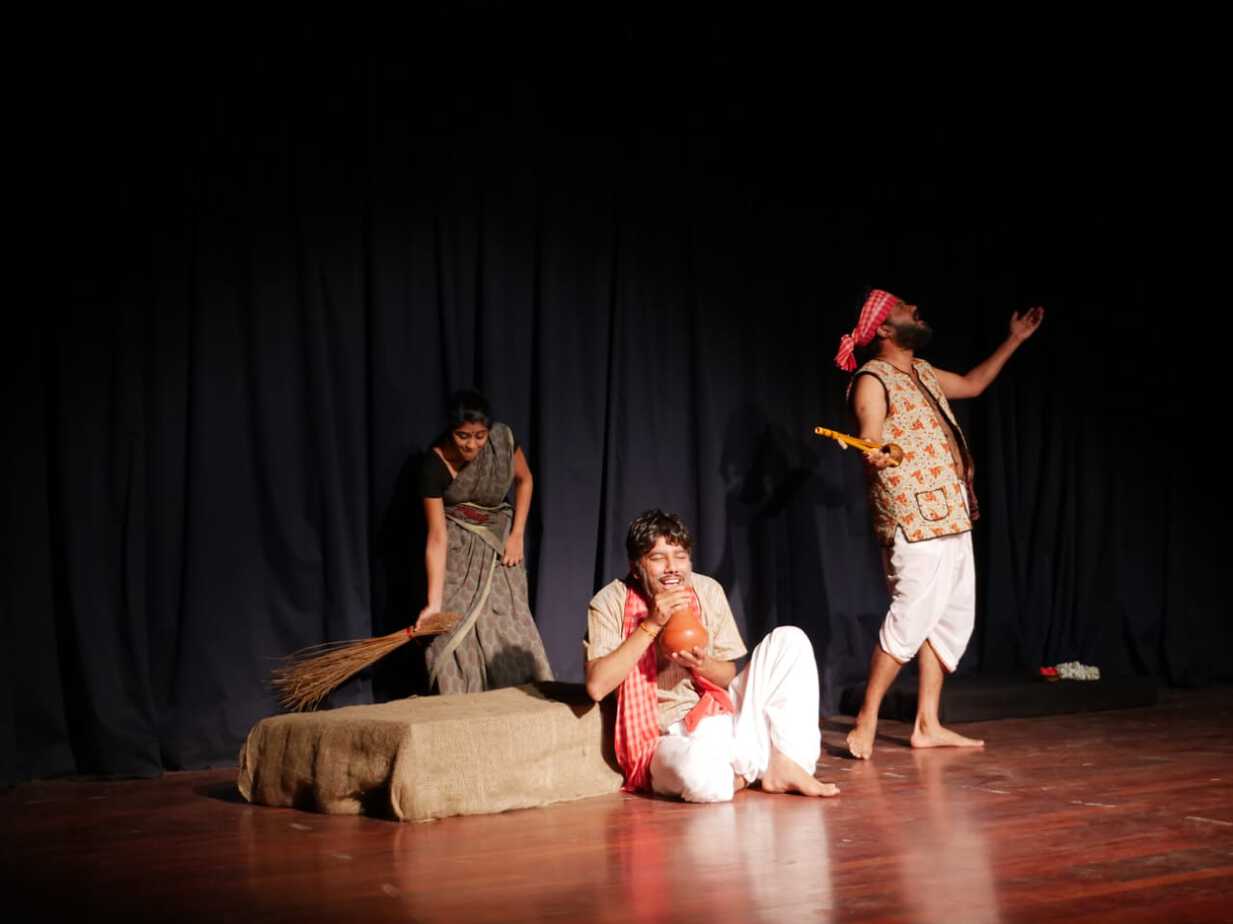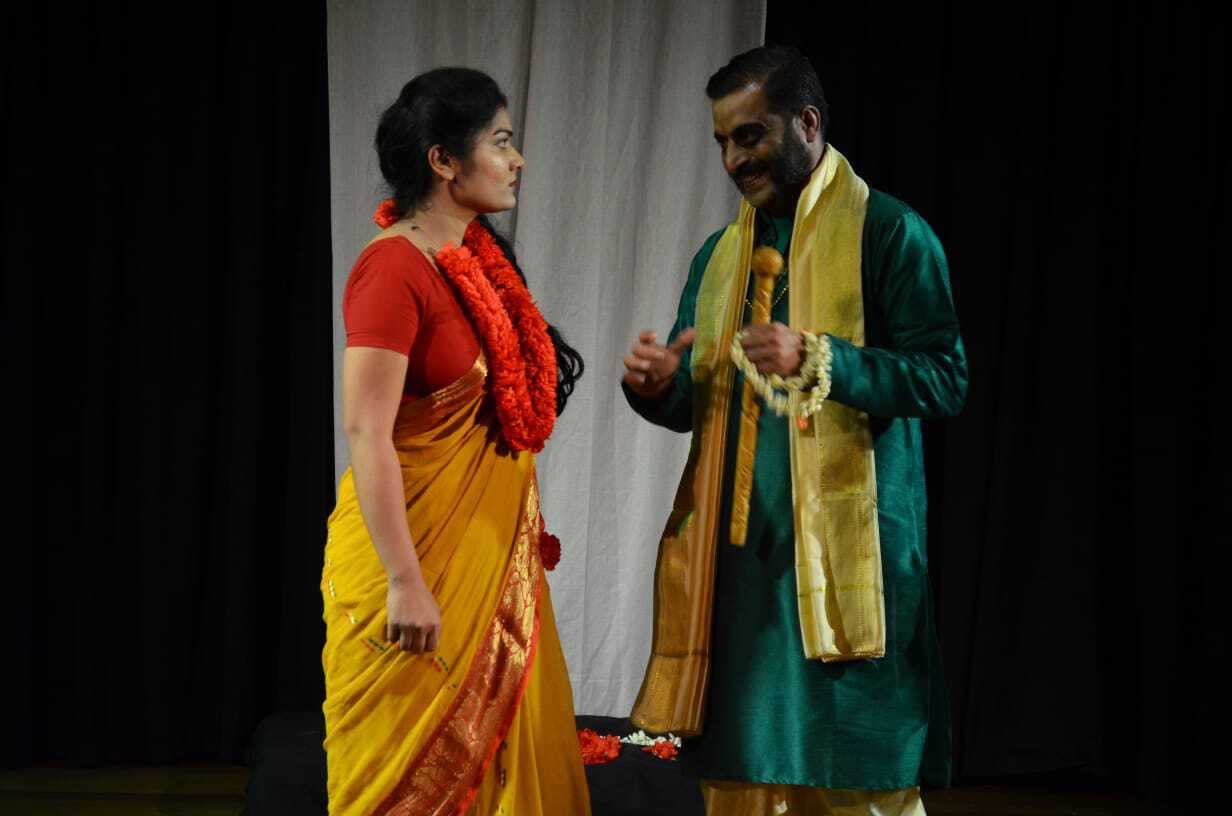A non-Bengali friend (we both majored in English) once told me, “I want to read Chandalika (one of Tagore’s greatest plays) right now.” I looked hapless. I had a Bengali copy with me. Where would I get an English version right at that point? I was rather amused that she went on to grudge – “You can read that great poet when you want. Maybe, I should learn Bengali.” I laughed, “His Bengali is not easy to grasp re…let me get you a translation ASAP!”.
We, as Bengalis (of course a particular section of the society), have always had the scope and privilege of being nourished by Tagore’s literature, something we cannot miss while growing up. We are understandably sentimental about it, as many other cultural inheritances. However, as a community, we have moved across the globe and have realized that the influence is pervasive. The nature of Tagore’s work transcends boundaries. That is given. What is appealing, like any great literature, is that his work can easily surpass the limitations imposed by time and social norms. For example, Chandalika can be read as a treatment on apartheid, racism, or casteism at any historical and geographical dimension. Chitrangada is relevant today, as more and more awareness grows around the subject of body -shaming. A particular favorite of mine is Raktakarabi or Red Oleanders that is one of the most symbolic of all his plays.

Theatre artists performing Tagore’s Red Oleanders. Pic: Sourav Dey
Raktakarabi is an allegory that deals with basic human instincts gone wrong. In the play, it is greed. Yakshapuri, an imaginary land holds humanity under bonds of greed. The “King” of the land unleashes his terrible powers from his dark enclosures that encompass his kingdom and hold all the people under its clutches. The miners, who once foray into his territory are overcome with lust and devalue themselves in the untiring pursuit of gold. They are demoted to mere creatures that remain satiated by hauling gold and basking in its glory. It is in this time and setting, appears Nandini, the heroine of this play, one of the most enigmatic of Tagore’s women characters. Nandini is the embodiment of love and compassion, strength and innocence. Adorned in red oleanders, she has promised herself to Ranjan, her lover. Nandini, in her beauty and free spirit, captures the imagination of the villagers, so much so that the king is enamored by her as well. She is an expression of humanity, sometimes recoiling at the king’s cruelty, sometimes unflinching in the face of all adversity. She sings songs with Bishu, who mocks the grueling economic pursuit of Yakshapuri, the tyranny of the colluding ministers, and even the falsity of the religious heads. Nandini beckons the villagers to come out of the labyrinth, fight for their freedom, and embrace it when freedom comes. Finally, the catastrophic climax sees Ranjan killed, the king himself coming out of his own shackles of greed to fight his own regime, and the play ends with the hope of the destructive state dissolving.

Theatre artists performing the roles of Nandini and the governor of the state in Red Oleanders. Pic: Sourav Dey
This play can be interpreted in an umpteen number of ways, that is relevant in a particular state, economy, and culture. Red Oleanders is one of the most enacted plays in the history of Bengali theatre. From the legendary Shambhu Mitra-Tripti Mitra rendition, it has never been banished from people’s memory and has come back again and again to express itself in different forms and formats.
A couple of months back, Prithesh Bhandary, the head of Bhandu Films, presented this play in Bengaluru, in a new experimental format, by combining Yakshagana, one of the classical folk art forms of Karnataka. Yakshagana is an opera format, that is seamlessly integrated into the allegorical content of the play. The costume, make-up, dance, and stage techniques add a special dimension to the performance. What I liked best was the king in his ornate costume – it added resplendence and awe to the character.
Bhandu Films is going to present this play again in Bengaluru for the third time. It is a wonderful opportunity for all to come experience the magic of Tagore’s work.
Show details
Date: 7th September, 2019
Time: 3:30 PM and 7:30 PM
Venue: Bangalore International Centre, Indiranagar. Link to map here.
Tickets can be purchased here.
Play details
Play Name : Red Oleanders
Produced by : Bhandu Films
Directed by: Prithesh bhandary
Cast and crew details
|
Nandini – Ritu Sanyal and Bhumika Mane King – Laban TP Professor – Murali Iyer and Rachit Sharma Bishu – Subhabrata kundu Phagulal – Ankit Tripathi Chandra – Moumi Guha Governor – Sudeendran Nair Gokul – Puneet Kishore – Aryamaan Chakraborty Wrestler – Akash Gosain – Nitesh Varma Headman – Arun Kumar Yakshagana Composer – Priyanka K Mohan Yakshagana Dancers – Niladri, Neha, Krithika, and Yogesh Set Design – Nithyatha Bhandary Music – Karthik Bhamdare Lights – Prithesh Bhandary Production and Marketing – Prithesh Bhandary Still Photography – Prithesh Bhandary Poster Design – Nithyatha Bhandary, Rituporno Gogoi, and Puneet Video – Prithesh Bhandary Rabindra Sangeet Training – Palashree Roy |
[Subhabrata Kundu and Prithesh Bhandary also contributed to this blog]